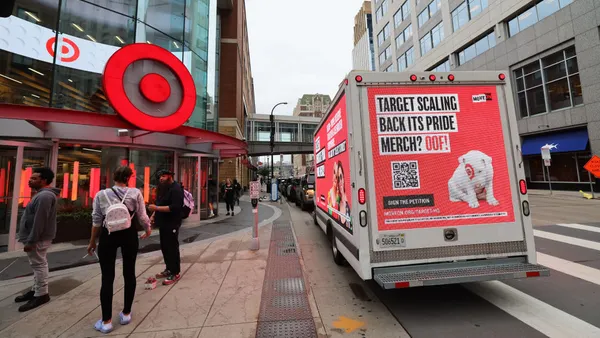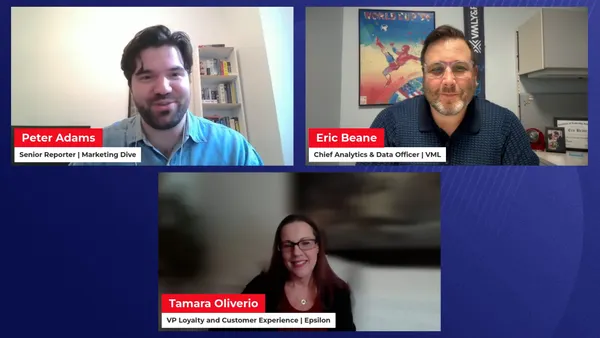Developing marketing campaigns that drive conversions can present a challenge, especially with concerns about wasted marketing spend.
Yet, consumers want relevant marketing offers. In fact, 91% of consumers report that they are more willing to do business with a company that provides offers directly relevant to them, according to research conducted by Accenture.
Access to data that helps you individualize the content and allows you to market to a narrow audience with strong intentions to purchase may help remove the guesswork when creating campaigns.
With multiple ways to capture and use this data, you can improve campaign results without alienating consumers.
Campaign personalization increases with stronger data
When brands use the most current and accurate data to inform campaigns, they can stop worrying about wasting impressions by targeting the wrong audiences. Instead, they can understand who their customer is, which helps them personalize the message and take a more creative approach to what they offer.
To capture data that supports personalizing campaigns, brands must build authentic customer connections. That way, they can serve content and ads that feel authentic to that consumer.
Transaction data plays a part in this process. For example, high-end cosmetic brands may sell in various marketplaces. When evaluating customer data, they’ll want to determine into which category a consumer fits. The way they market to each of those consumers will differ.
“That's really the key — using that data to drive meaningful experiences and making it a personalized experience and a more authentic transaction between the brand and the customer,” said Blaine Britten, senior vice president of Data Strategy at Stirista. “And by doing that, you're going to reduce a lot of the waste.”
Beyond capturing the data: know when to use it
Capturing identity-level data can empower brands to get more granular with their campaigns, a crucial step for improving results. However, getting the right message to the right people at the right time may be tricky.
“We want to make sure that whatever message we're sending is going to be received by someone who wants to receive that message,” Britten said. “So, it's not just having the data, but also knowing when and when not to use it that we've found to be really valuable.”
Ethically using customer-provided data can make all the difference in whether they remain loyal to the brand.
Brands can foster trust by allowing consumers to opt out of messages.
For example, when someone chooses to opt out, yet a brand continues to send them marketing and sales messages, that decreases trust — and most likely weakens any possibility of having a future relationship with that consumer.
In fact, 70% of Americans think that limiting who can and can’t access their data has become tougher, while just 34% of Americans believe brands adequately safeguard consumer data, according to this 2022 Ipsos poll. This data shows that if a brand can demonstrate that they protect consumers’ data, they earn an opportunity to build trust.
Beyond that, continuing to deliver helpful content also builds trust.
“It all boils down to — is this brand providing value to me?” Britten said.
Better personalization allows brands to accomplish more
When brands can preserve customer relationships versus constantly churning through them, they have a higher likelihood of driving conversions. To increase the chances of success, focusing on the customer’s experience should remain at the heart of each interaction.
Building an authentic connection with consumers allows brands to serve them more personalized content, which increases engagement and leads to higher conversion rates.
“Being able to see that entire journey and find out what DOES work will just give you more information for future planning, future decisions, and give you another shot to make that good impression with your most loyal customers,” Britten said.
Then, to add new customers, looking at a brand’s core customer group and building around that can be a recipe for success.
Accurate data helps brands avoid wasting time and money
By starting with a plan informed by reliable data and tweaking it as they move forward, brands can learn a lot — and reduce much of the waste caused by blindly guessing how and where to target consumers.
Investing a portion of the media budget in a channel supported by baseline data, for example, then evaluating the performance so that they can adjust and optimize the outreach accordingly provides a better path to success over investing it all in an option you’re not sure will be able stay effective.
Testing the channel — be it SMS, CTV email, or direct mail — along with the day of the week and time of day, and then evaluating that data to optimize the campaign toward what’s performing best leads to improved results.
Stronger data leads to more conversions — and more loyal customers
When brands call on robust data to help develop campaigns, they are more likely to reach audiences that are the right fit. This converts more prospects into buyers, who then become loyal customers










